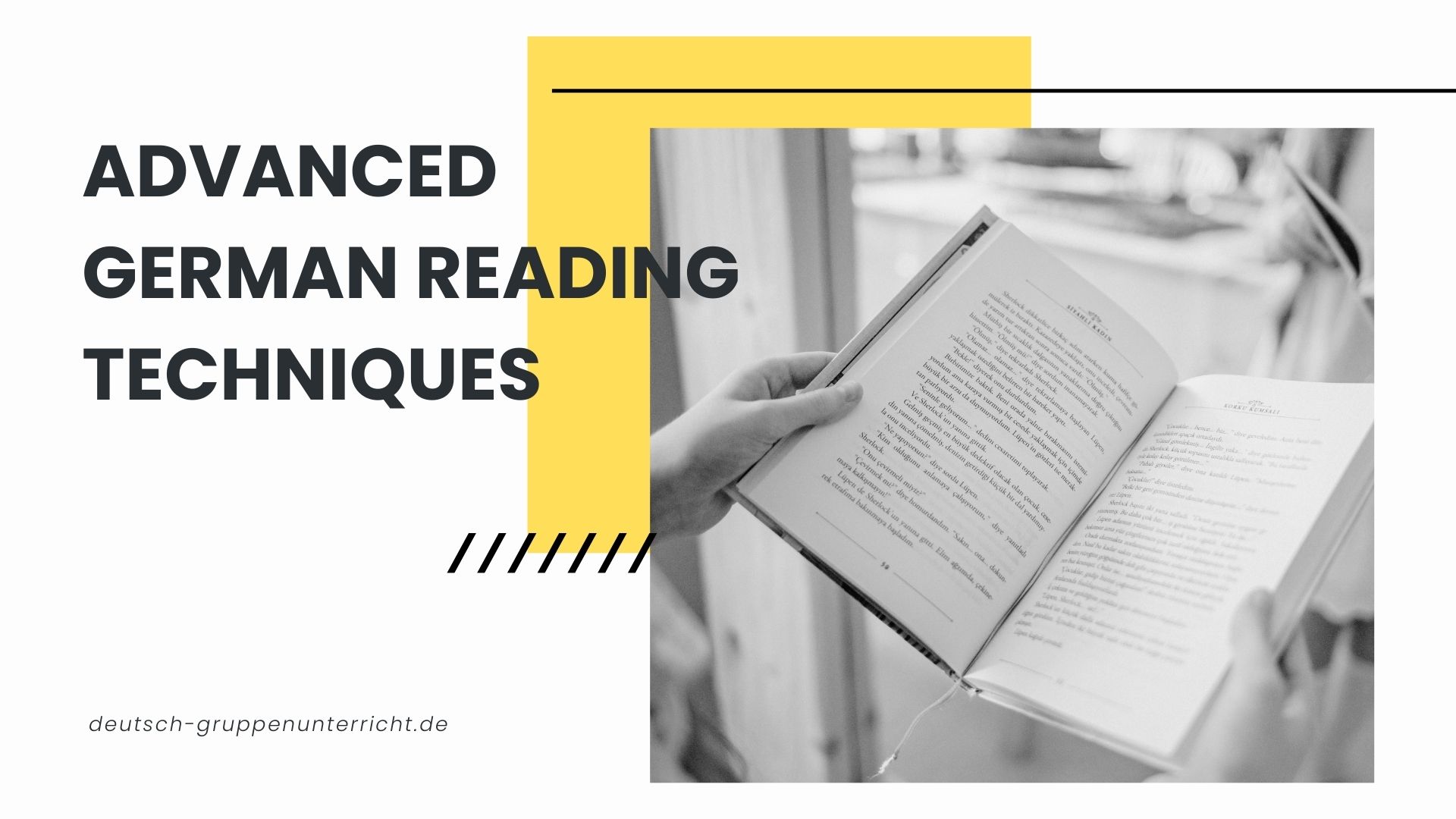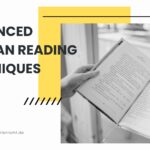Mastering advanced German reading techniques is essential for fluent comprehension and nuanced understanding of complex texts. To achieve this, focus on building vocabulary in context by exposing yourself to diverse materials and inferring meanings from context. Analyze German sentence structure by understanding cases, relative clauses, and word order. Identify figurative language, such as metaphors, similes, and personification, to deepen your understanding of literary craftsmanship. Additionally, decipher idiomatic expressions and master technical vocabulary to enhance your comprehension. Develop effective reading comprehension strategies, such as visualizing text and identifying main ideas. By doing so, you’ll access the full potential of German literature and discover even more subtleties within complex texts.
Table of Contents
Building Vocabulary in Context
For German language learners, a dictionary can be a tool as essential as a carpenter’s hammer, yet relying solely on it to build vocabulary can be limiting. While dictionaries provide definitions and translations, they often fail to convey the nuances of word usage in context. To truly grasp the meaning of unfamiliar words, learners must encounter them in authentic texts, such as news articles, literature, or conversations.
Reading in context allows learners to see how words interact with one another, forming complex relationships that cannot be fully captured by a dictionary entry. By recognizing patterns and associations between words, learners can infer meanings and develop a more intuitive understanding of vocabulary. To build vocabulary in context, learners can start by reading a variety of texts, from simple news articles to more complex literary works. As they read, they should take note of unfamiliar words and try to infer their meanings based on the surrounding context. What do you think the word “Fremdscham” means in the sentence: “Ich empfinde Fremdscham, wenn ich seine Geschichte höre”?
Understanding German Sentence Structure
To better comprehend German sentence structure, it is crucial to recognize the following key elements:
- In German, the verb often appears in the second position in a main clause, but it can be in the final position in a subordinate clause.
- Word order can change to emphasize certain words or phrases, such as in questions or exclamations.
- German uses cases (nominative, accusative, genitive, and dative) to indicate the grammatical function of nouns and pronouns.
- Relative clauses are often used to provide additional information about a noun or pronoun.
- German sentences can be long and complex, with many clauses and phrases connected by conjunctions and relative pronouns.
Identifying Figurative Language
To effectively analyze and interpret German texts, it is essential to recognize and understand various forms of figurative language. Figurative language devices such as metaphors, similes, personification, and hyperbole enable authors to convey complex emotions, ideas, and themes in a more nuanced and engaging manner. Can you identify these literary devices in a text and distinguish between them, or do you need to refresh your knowledge of their characteristics and functions?
Recognizing Metaphor and Simile
In traversing the complexities of German literature, one often encounters figurative language that adds depth and nuance to the narrative. Two of the most commonly used figurative devices are metaphors and similes. Understanding the difference between these two devices can greatly enhance one’s reading comprehension.
A simile is a comparison between two unlike things using the words “wie” (like) or “als” (as), whereas a metaphor is a comparison without these words. Identifying metaphors and similes requires attention to the language used and the context in which they appear. Here are some key points to reflect upon:
- Metaphors and similes often use sensory details to create vivid imagery.
- They can be used to describe abstract concepts, such as emotions or ideas.
- Metaphors and similes can create powerful connections between seemingly disparate things.
- They can also be used to convey complex ideas in a simple and concise manner.
- Pay attention to repeated metaphors or similes, as they can reveal underlying themes or motifs in the text.
Identifying Personification Techniques
When encountering personification, ask yourself: What human quality or action is being attributed to the non-human entity? How does this affect the overall meaning or mood of the text? Recognizing personification can help you better understand the author’s intended message and appreciate the literary craftsmanship. To improve your skills, practice identifying personification in various German texts, such as poetry, short stories, or novels. As you become more comfortable with this technique, you will be able to reveal deeper meanings and nuances in the texts you read. By mastering personification, you will enrich your reading experience and gain a more profound understanding of German literature.
Understanding Hyperbole Usage
A masterful use of hyperbole can elevate a text from the mundane to the extraordinary, as seen in the works of German authors such as Erich Kästner and Günter Grass. Understanding hyperbole usage is essential in advanced German reading, as it allows readers to grasp the author’s intended meaning beyond literal interpretation. Hyperbole is a rhetorical device used to convey strong emotions, emphasize points, or create vivid imagery.
When identifying hyperbole in German texts, consider the following:
- Exaggerated quantities: “Ich habe tausend Mal darüber nachgedacht” (I’ve thought about it a thousand times) is an example of an exaggerated quantity.
- Incredible comparisons: “Er ist so stark wie ein Löwe” (He is as strong as a lion) is an incredible comparison used to emphasize someone’s strength.
- Overstated emotions: “Ich bin so glücklich, dass ich tanzen könnte” (I’m so happy I could dance) is an overstated emotion used to convey excitement.
- Unrealistic scenarios: “Ich würde mein Leben für dich geben” (I would give my life for you) is an unrealistic scenario used to emphasize devotion.
- Emphatic expressions: “Das ist der beste Tag meines Lebens” (This is the best day of my life) is an emphatic expression used to convey strong emotions.
Analyzing Textual Coherence
Analyzing textual coherence is an essential step in comprehending complex German texts, as it requires readers to identify the relationships between ideas and evaluate the logical flow of information. Effective readers recognize that linking ideas together involves understanding how the author uses connecting phrases, repetition, and other cohesive devices to create a cohesive narrative. Can you identify the strategies that authors use to maintain a logical flow of ideas in a text, and how do these strategies contribute to a deeper understanding of the material?
Linking Ideas Together
Linking ideas together is essential for effective comprehension of complex German texts, as it enables readers to establish meaningful relationships between individual sentences and paragraphs. This skill allows readers to understand the author’s message, identify patterns, and make connections between different ideas. By linking ideas together, readers can gain a deeper understanding of the text and improve their overall comprehension.
To link ideas together effectively, consider the following strategies:
- Use connecting words and phrases, such as “deshalb” (therefore) and “zudem” (additionally), to connect ideas between sentences and paragraphs.
- Identify repetitive words and phrases, such as synonyms and antonyms, to recognize patterns and relationships between ideas.
- Look for cause-and-effect relationships between ideas, using words like “wegen” (because of) and “dadurch” (as a result).
- Recognize the use of examples and illustrations to support main ideas and link them to the text.
- Use contextual clues, such as headings and subheadings, to understand the relationships between different sections of the text.
Maintaining Logical Flow
Within complex German texts, maintaining logical flow is essential for effective comprehension, as it enables readers to follow the author’s train of thought and guide through the text with ease. Analyzing textual coherence involves examining the connections between sentences, paragraphs, and ideas to guarantee a smooth flow of information. To achieve this, pay attention to transitional phrases, such as “allerdings” (however) and “dennoch” (nevertheless), which signal a shift in the author’s argument or perspective.
When reading complex texts, ask yourself questions like: What is the main idea of this paragraph? How does it relate to the previous or subsequent paragraph? What transitional phrases or words does the author use to connect ideas? By doing so, you will improve your ability to identify relationships between ideas and maintain logical flow.
As you practice analyzing textual coherence, you will become more proficient in guiding through complex texts and understanding the author’s intended meaning. This, in turn, will enhance your overall comprehension and fluency in German.
Deciphering Idiomatic Expressions
Mastering idiomatic expressions is essential for advanced German readers, as these phrases often hold the key to revealing the nuances of the language. Idioms can be challenging to decipher, but with practice and patience, they can become a valuable tool in understanding complex texts.
To improve your comprehension of idiomatic expressions, consider the following strategies:
- Look for context clues: Pay attention to the surrounding words and phrases to help you understand the idiomatic expression.
- Break down the phrase: Identify the individual words and try to understand their literal meaning.
- Use dictionaries and resources: Reference German language dictionaries or online resources to find explanations of idiomatic expressions.
- Practice active recall: Quiz yourself on idiomatic expressions to reinforce your understanding.
- Read widely: Exposure to various texts and genres can help you encounter idiomatic expressions in different contexts.
Mastering Technical Vocabulary
Practice active learning by creating flashcards or concept maps to connect new words to their meanings. Additionally, read a variety of technical texts to expose yourself to different terminology and contexts. As you encounter unfamiliar words, try to deduce their meanings from the surrounding text or use a dictionary to look them up.
Reading Comprehension Strategies
Effective readers employ a range of strategies to enhance their comprehension of complex German texts. By incorporating these techniques, you can greatly improve your ability to understand and engage with the material. Developing strong reading comprehension skills is essential for advanced German learners, as it allows you to navigate challenging texts with confidence and accuracy.
Some key strategies to enhance your reading comprehension include:
- Visualizing the text: Create mental images to help you remember and connect with the information.
- Identifying main ideas: Determine the central argument or point being made in the text.
- Recognizing supporting details: Identify the evidence or examples used to support the main idea.
- Making inferences: Draw conclusions based on the information provided in the text.
- Asking questions: Engage with the material by asking yourself questions about the content and themes.
Conclusion
Effective German reading techniques require a multifaceted approach. Building vocabulary in context and understanding German sentence structure form the foundation of advanced reading skills. Identifying figurative language, analyzing textual coherence, deciphering idiomatic expressions, and mastering technical vocabulary also play essential roles. By integrating these strategies, readers can enhance their comprehension and analysis of complex texts. Consistent practice and exposure to diverse texts further refine reading skills, empowering individuals to engage with the language on a deeper level.






